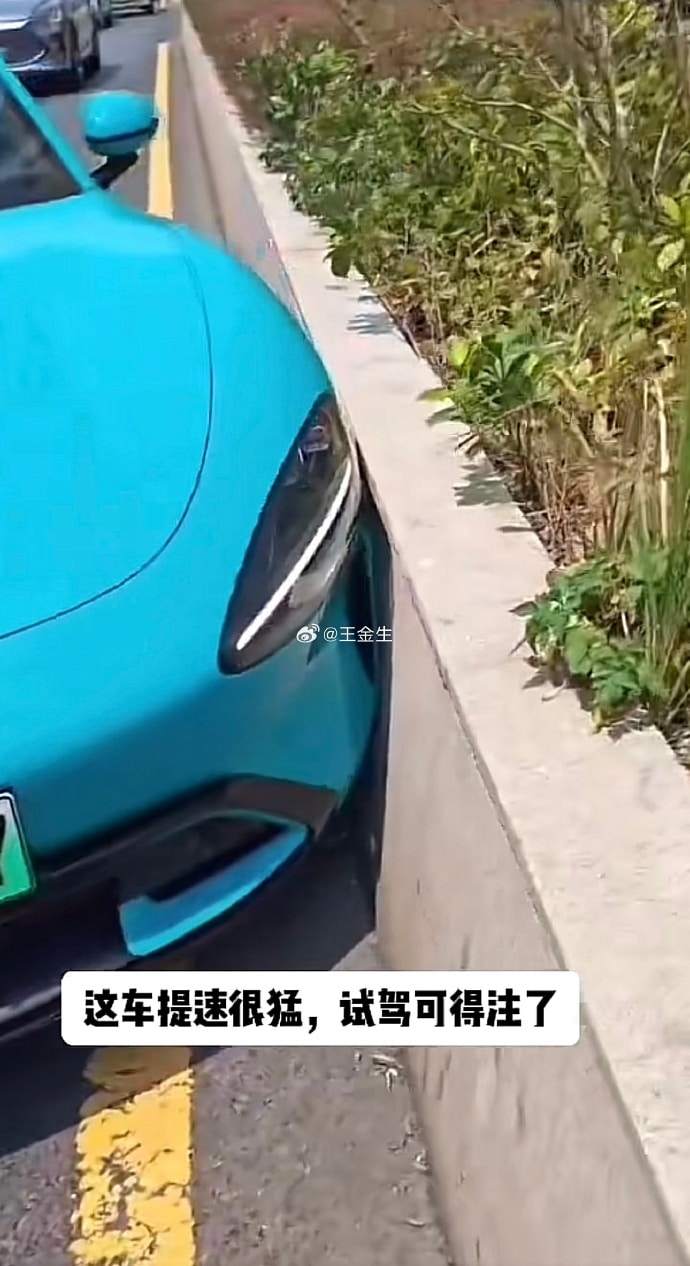Xiaomi launched its first electric vehicle, SU7, on March 28 in Beijing. China’s Apple Car received nearly 90,000 firm orders 24 hours after launch, which means it is basically sold out in 2024. Deliveries will start by the end of April.
The EV has already hit 59 showrooms in 28 cities nationwide where test drives are available, attracting large crowds. Some customers even wait until 3 am to drive it. Moreover, Xiaomi handed the SU7 to many lifestyle influencers for driving reviews.
With so many Xiaomi SU7s on the streets, negative narratives started to emerge. Videos and pictures of Xiaomi’s sedan crashed and accidents spread over Chinese social networks. In one of those videos, the driver of the Aqua Blue SU7 loses control of the test vehicle and crashes into the side wall. Before that, he performed inexperienced driving; however, modern EVs should be able to handle that and not allow such a dangerous maneuver.
This points out the failure of the vehicle traction control software. The well-debugged TC system must sense wheel slip and adjust torque via motor or targeted brake application. Based on the video, Xiaomi’s TS system is far from advanced, although it is unclear whether this is due to SW or HW.
For example, Tesla would most likely not allow such an unsafe maneuver. This is not because Tesla’s regular TC would be better, as all systems just measure driven wheel revolutions per minute (RPM) and react when those get too high, as the wheel slips, leading to a reaction delay.
The reason is Tesla has a second TC system for motor traction control. The data from the electric motors are used to measure the actual wheel grip, which gives the possibility to react when the wheel loses traction but isn’t slipping yet. This has its limit, so the regular TC is also used; however, it can yield remarkable results.
Another video shared by Inside China Auto shows the Xiaomi SU7 wearing Radiant Purple with defective air suspension, transforming the testing vehicle into the unintentional lowrider.
Weibo user 王金生 shared today a set of pictures of SU7 involved in a minor accident, concluding the car handled the collision well with only minor damage to the body.




Another recorded crash is a standard rear-end collision of an SU7 with a German legacy maker. This collision most likely didn’t involve any defect, just an inexperienced driver. Interestingly, it happened before the launch event on March 24.


In early February, Xiaomi conducted winter testing in Heiha City in Northeastern China. The SU7 made headlines when it crashed on a snowy road, recording the first historical crash of a Xiaomi car.

Editor’s comment
It will be interesting to watch how marketing guru Lei Jun, Xiaomi’s CEO who managed to get half of China excited about Xiaomi’s first EV, handles this situation.
Xiaomi is the consumer electronic giant famous for its great price/value ratio. However, there is a difference between giving hundreds of smartphones, vacuum cleaners, watches, or TVs for review to Xiaomi’s loyal and excited lifestyle influencers, Douyiners (the Chinese name for Tick Tok is Douyin), or Weibo bloggers.
I have seen hundreds of reviews of Xiaomi products in China in past years. I can tell you that lending the vehicle, which still needs to polish some SW flaws (not surprising as it is literary their first car) to crazy TikTok stars who are masters in creating eye-catching and shocking content suitable for the platform is a perfect storm. In the gadget reviews, I saw phones thrown from the 10th floor to prove their durability. Powerbanks were cast into the fire, and you better don’t ask me what they did with robotic vacuum cleaners.
Giving those loyal influencers a 2.5 tons heavy, 5-meter-long car with several hundred horsepower under the hood and pretending it’s another gadget to have fun with is something that can backfire heavily.
However, not only influencers are to blame. Many regular Xiaomi fans and potential customers have started to perform test drives. During the launch event, much emphasis was put on how much connectivity SU7 has. And it is truly incredible – it is deeply integrated with your home appliances, Xiaomi phone, TV, watches, and even iPhone. You can control your car from your home and vice versa – for example, even open the curtains in your living room from inside your vehicle. However, all this creates an image of the SU7 as another gadget in the Xiaomi ecosystem. Definitely, some respect for the 663 hp AWD monster would be needed.
Xiaomi launched just three days ago, and the company needs to address this in the early stages. Otherwise, the perfectly crafted image Lei Jun created might start to crumble.




